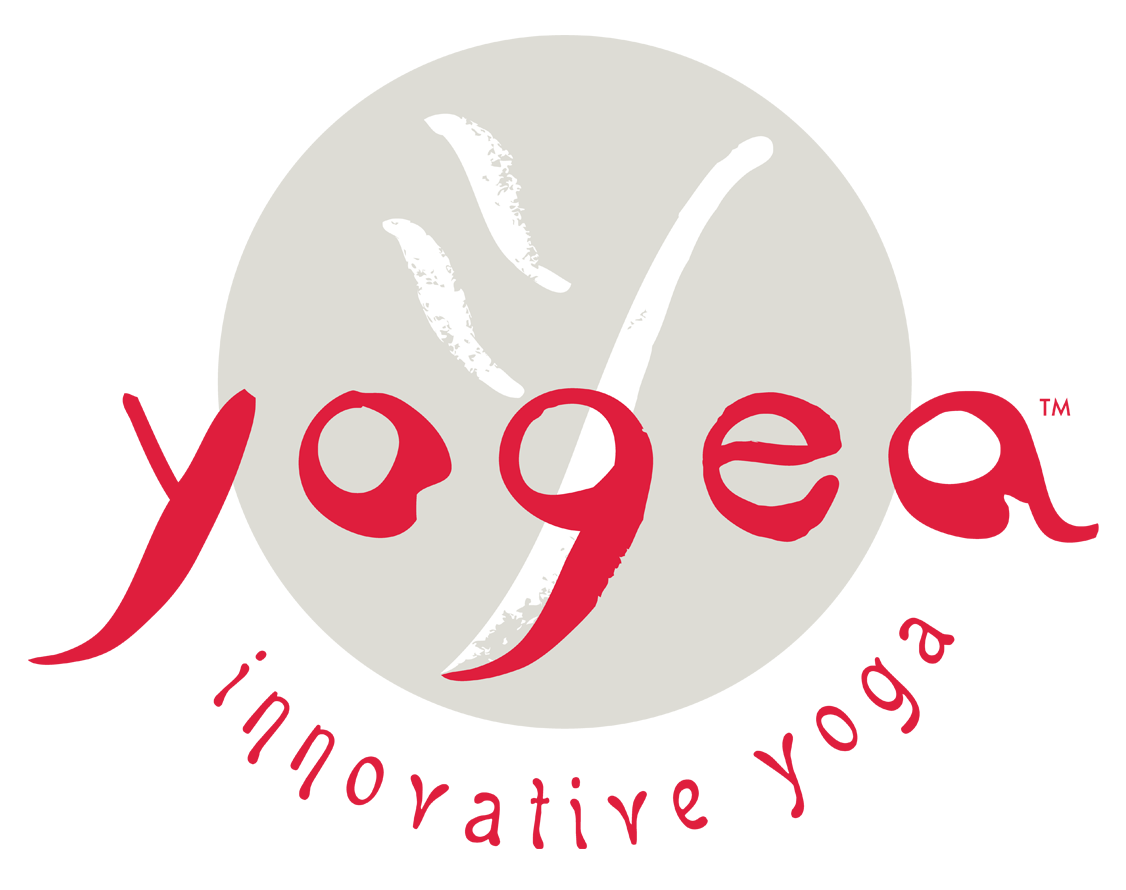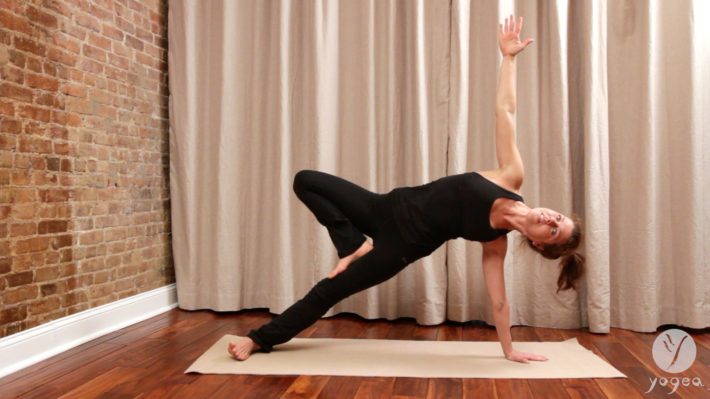Welcome to Yogea’s Side Angle and Pigeon Asana Lab. This series features Side plank/Angle variations Utthita Parsvakonasana in Vashistasana and pigeon variations Eka Pada Supta Rajakapotasana.
The series starts with a hybrid between side angle and side plank Utthita Parsvakonasana in Vashistasana Start by assuming side plank. Step the upper leg forward, so that the thigh crosses the extended balancing leg perpendicularly. As you root through the outer seam of the extended leg, Lift the side of the waist and make sure your arms are extending in a single line. Keep on twisting the torso to the sky and pulling out of your writs to prevent any ligament injury. This pose lengthens the sides of the waist, builds strength in the upper arms and legs, twists the lower abdomen and detoxifies the kidneys and tests one’s sense of balance.
Next pull out of your propped writs and place the leg that was bend in front directly into the inner thigh of the balancing leg. Lift more through the outer edge of the balancing leg, and through the side of the waist and the hips to assume Side Plank/Tree – Vashistasana in Vrkasana. This pose further tests your balance as you invigorate the whole body, strengthen the arms and the legs and open the hip.
Then, pressing the supporting arm firmly into the floor, rotate your torso to bring the bend knee with the shin and top of the foot on the floor and come into flying pigeon variation Eka Pada Rajakapotanasa. In this variation clasp the back foot with the same hand and extend the front arm forward in line with the folded knee. This variation stretches the shoulder and the hip and cultivates a sense of subtle balance.
Lastly, assume pigeon pose by anchoring and squaring both hips into the floor. Lower the arms all the way down and gradually fold over the folded knee while you maintain the squared hips. This classical King pigeon variation Rajakapotasana stretches the hips, gluteus, groin and psoas and releases emotional residue harbored in the hip area.
Yogea Asana Lab is not a yoga routine and should be regarded solely as an educational platform to reinforce proper postural alignment and improve the quality of your practice. The approach is integrated as poses are grouped into different targeted categories. Each set of poses is demonstrated only on one side. The route of assuming poses and releasing through counter-poses is mapped clearly and slowly, allowing time for assimilation and grasping. The main objective is to guide you in and out of poses safely and smoothly, as well as to acquaint you with basic anatomical and energetic principles that weave the geometry of every asana. In turn, you will be able to perform the Yogea routines with clarity, precision and abandonment. As you follow the tips of proper alignment you will feel more stable, ready to deepen your practice and eager to transition gracefully from one stage to the next both on the mat and in life.


Leave a Reply